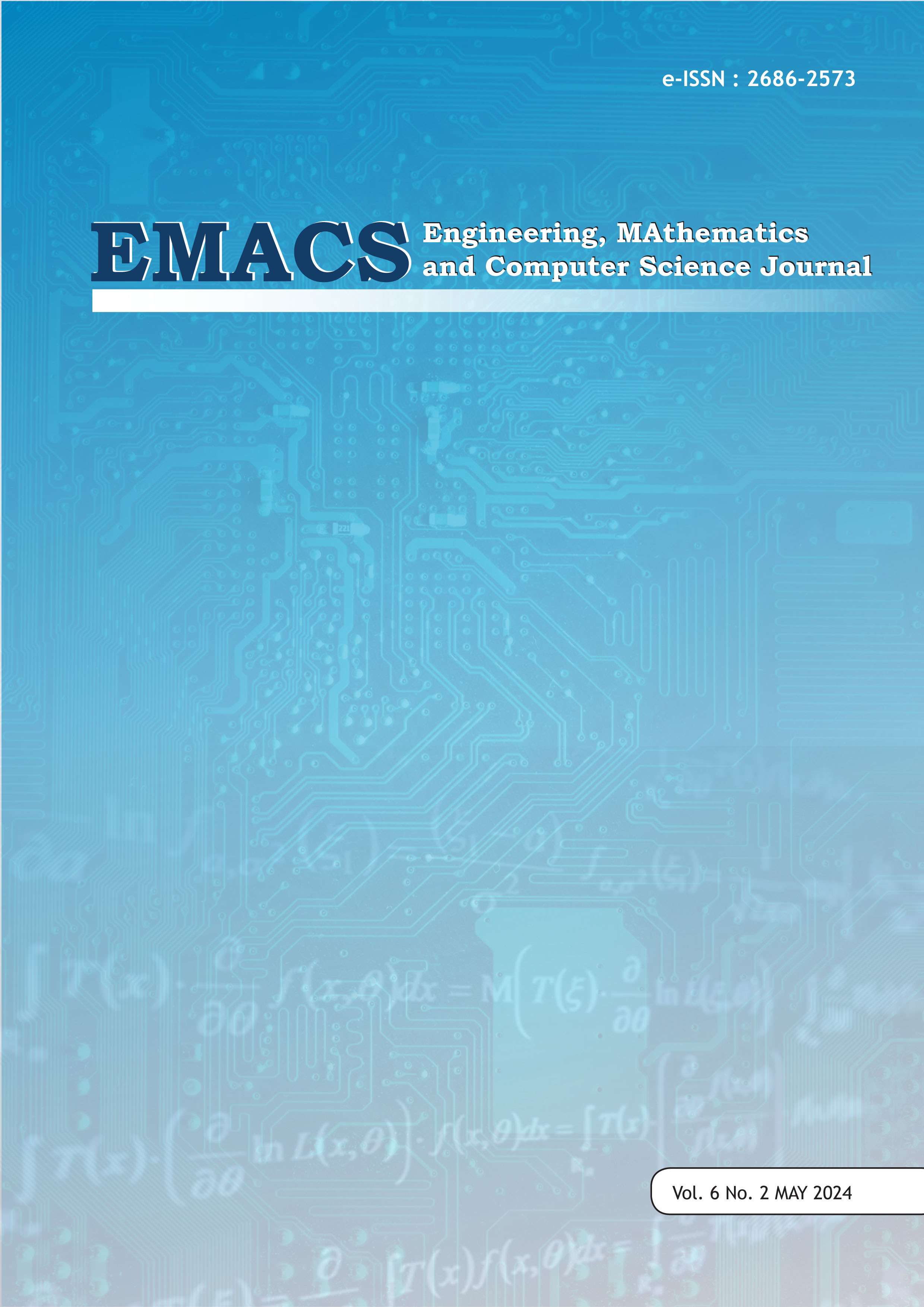Supply Chain Sustainability Measurement in Telecommunications Industry in Indonesia
DOI:
https://doi.org/10.21512/emacsjournal.v6i2.11307Keywords:
Sustainability, Telecommunication Industry, Supply Chain, IndonesiaAbstract
In the fiercely competitive telecommunications industry of Indonesia, the significance of innovation and perpetual improvement cannot be underestimated. It is imperative for businesses to explore the potential of sustainable supply chain management, as it allows for the integration of environmental, economic, and social dimensions. By implementing a comprehensive and thorough approach, this study offers a theoretical framework for measuring sustainable supply chain performance. Through qualitative and quantitative methods, you'll be able to identify the attributes that greatly impact the success of your sustainable supply chain management. On this research Analytic Hierarchy Process (AHP) utilize to define Consistency Ratio (CR) and weight between dimension using SuperDecisions software. Then, Multidimensional Scaling (MDS) is utilized to measure performance of supply chain sustainability. At the same time, a stress value also measured to indicate the sustainability measurement of one specific dimension is sufficient in accordance with existing condition or not. Next, to better indicate which attributes are most influential on improving dimensional sustainability performance, it is essential to conduct a sensitivity analysis and Montecarlo analysis for each attribute. In the end, this research successfully determined which attributes that influence sustainable supply chain management and measure the value of supply chain sustainability in the telecommunications industry in Indonesia.
References
Baliga, R., Raut, R.D. and Kamble, S.S. (2020), "Sustainable supply chain management practices and performance: An integrated perspective from a developing economy", Management of Environmental Quality, Vol. 31 No. 5, pp. 1147-1182. https://doi.org/10.1108/MEQ-04-2019-0079
Belvedere, V., & Grando, A. (2017). Sustainable Operations and supply chain management. John Wiley & Sons.
Bouchrika, I. (2023). Primary research vs secondary research: Definitions, differences, and examples. Research.com. https://research.com/research/primary-research-vs-secondary-research#secondary
Carter, C. R., & Rogers, D. S. (2008). A framework of sustainable supply chain management: moving toward new theory. International Journal of Physical Distribution & Logistics Management, 38(5), 360–387. https://doi.org/10.1108/09600030810882816
Catherine, C. (2021, December 2). 7 Data collection methods in business Analytics. Business Insights Blog. https://online.hbs.edu/blog/post/data-collection-methods
Cetinkaya, B., Cuthbertson, R., Ewer, G., Klaas-Wissing, T., Piotrowicz, W., & Tyssen, C. (2011). Sustainable Supply Chain Management: Practical ideas for moving towards best practice.
Dunn, W. L., & Shultis, J. K. (2023). Exploring monte carlo methods. Elsevier.
Grant, D. B., Wong, C. Y., & Trautrims, A. (2023). Sustainable Logistics and Supply Chain Management: Principles and Practices for Sustainable Operations and Management. Kogan Page Publishers.
Kreye, M. E. (2022). Sustainable Operations and Supply Chain Management. https://doi.org/10.4324/9781003345077
Leal, J. E. (2020). AHP-Express: A simplified version of the analytical hierarchy process method. MethodsX, 7, 100748. https://doi.org/10.1016/j.mex.2019.11.021
Palinggi, S., & Allolinggi, L. R. (2020). Analisa Deskriptif Industri Fintech di Indonesia: Regulasi dan Keamanan Jaringan dalam Perspektif Teknologi Digital. Ekonomi Dan Bisnis, 6(2), 177–192. https://doi.org/10.35590/jeb.v6i2.1327
Pragmawiguno, G., Setiawan, A., & Mulyati, H. (2023). Analysis of the factors affecting performance of Sustainable Supply Chain Management of Garut Arabica Coffee. Jurnal Manajemen Bisnis, 14(1), 179–197. https://doi.org/10.18196/mb.v14i1.16842
Saeed, N., Nam, H., Al-Naffouri, T. Y., & Alouini, M. S. (2019). A state-of-the-art survey on multidimensional scaling-based localization techniques. IEEE Communications Surveys & Tutorials, 21(4), 3565-3583.
Sánchez-Flores, R. B., Cruz-Sotelo, S. E., Ojeda-Benitez, S., & RamÃrez-Barreto, Ma. E. (2020). Sustainable Supply Chain Management - A Literature Review on Emerging Economies. Sustainability, 12(17), 6972. https://doi.org/10.3390/su12176972
Widiastuti, N., & Sylviana, W. (2020). Technical Efficiency on the Operator Industry of Telecommunication in Indonesia. PalArch's Journal of Archaeology of Egypt/Egyptology, 17(3), 1541-1550.
Zhao, Y., Ukkusuri, S. V., & Lü, J. (2018). Multidimensional Scaling-Based Data dimension Reduction Method for application in Short-Term traffic flow Prediction for urban road network. Journal of Advanced Transportation, 2018, 1–10. https://doi.org/10.1155/2018/3876841
Downloads
Published
How to Cite
Issue
Section
License
Copyright (c) 2024 Abdullah Nabil, Muhammad Asrol

This work is licensed under a Creative Commons Attribution-ShareAlike 4.0 International License.
Authors who publish with this journal agree to the following terms:
- Authors retain copyright and grant the journal right of first publication with the work simultaneously licensed under a Creative Commons Attribution License - Share Alike that allows others to share the work with an acknowledgment of the work's authorship and initial publication in this journal.
- Authors are able to enter into separate, additional contractual arrangements for the non-exclusive distribution of the journal's published version of the work (e.g., post it to an institutional repository or publish it in a book), with an acknowledgment of its initial publication in this journal.
- Authors are permitted and encouraged to post their work online (e.g., in institutional repositories or on their website) prior to and during the submission process, as it can lead to productive exchanges, as well as earlier and greater citation of published work.
USER RIGHTS
All articles published Open Access will be immediately and permanently free for everyone to read and download. We are continuously working with our author communities to select the best choice of license options, currently being defined for this journal as follows: Creative Commons Attribution-Share Alike (CC BY-SA)





